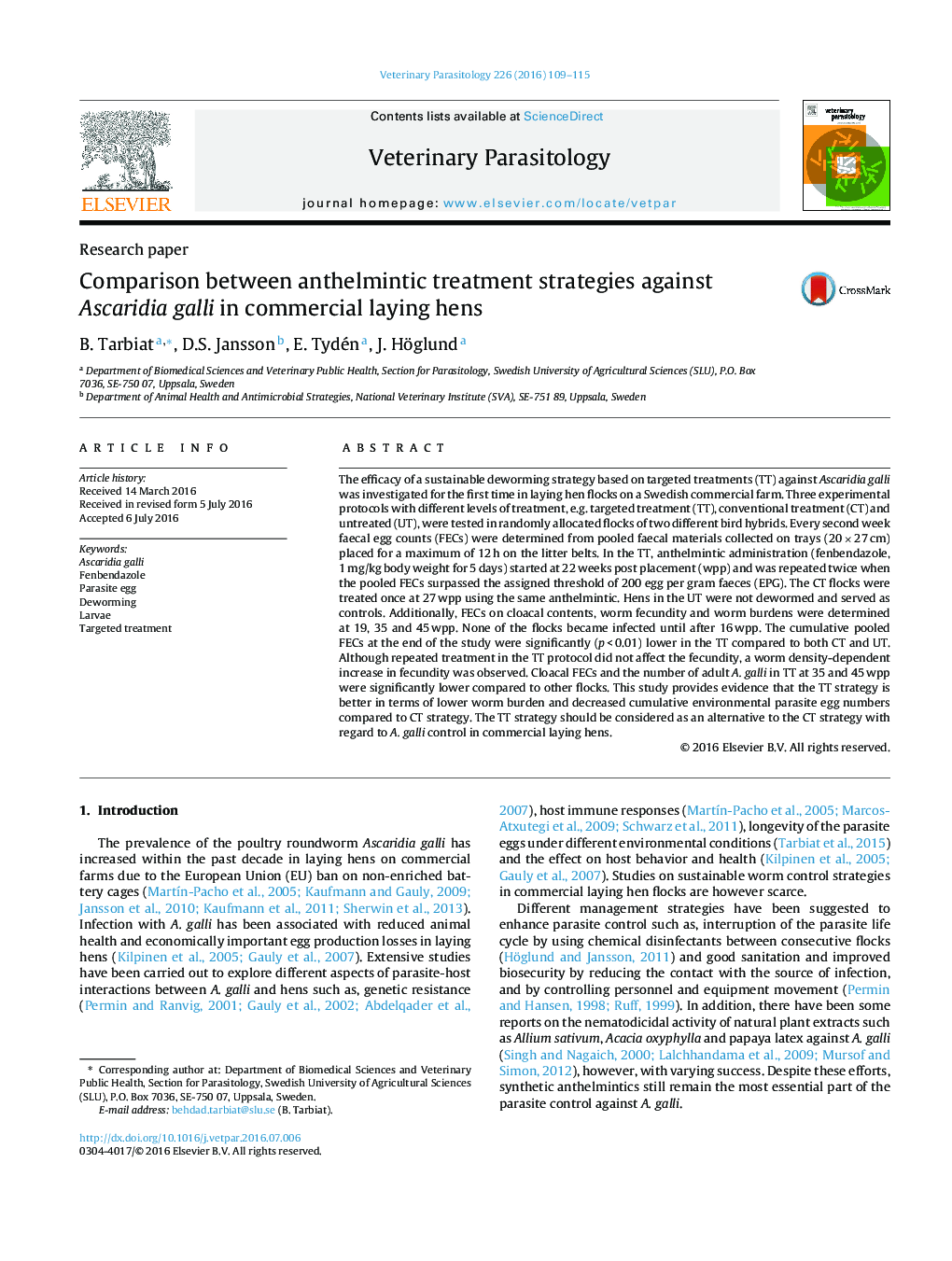| کد مقاله | کد نشریه | سال انتشار | مقاله انگلیسی | نسخه تمام متن |
|---|---|---|---|---|
| 5802012 | 1555650 | 2016 | 7 صفحه PDF | دانلود رایگان |
- Application of the TT strategy significantly lowered the faecal egg counts of the flocks with A. galli.
- Parasite worm burdens in the TT flocks remained low during egg production period.
- Individual cloacal EPGs were low in the TT strategy.
The efficacy of a sustainable deworming strategy based on targeted treatments (TT) against Ascaridia galli was investigated for the first time in laying hen flocks on a Swedish commercial farm. Three experimental protocols with different levels of treatment, e.g. targeted treatment (TT), conventional treatment (CT) and untreated (UT), were tested in randomly allocated flocks of two different bird hybrids. Every second week faecal egg counts (FECs) were determined from pooled faecal materials collected on trays (20 Ã 27 cm) placed for a maximum of 12 h on the litter belts. In the TT, anthelmintic administration (fenbendazole, 1 mg/kg body weight for 5 days) started at 22 weeks post placement (wpp) and was repeated twice when the pooled FECs surpassed the assigned threshold of 200 egg per gram faeces (EPG). The CT flocks were treated once at 27 wpp using the same anthelmintic. Hens in the UT were not dewormed and served as controls. Additionally, FECs on cloacal contents, worm fecundity and worm burdens were determined at 19, 35 and 45 wpp. None of the flocks became infected until after 16 wpp. The cumulative pooled FECs at the end of the study were significantly (p < 0.01) lower in the TT compared to both CT and UT. Although repeated treatment in the TT protocol did not affect the fecundity, a worm density-dependent increase in fecundity was observed. Cloacal FECs and the number of adult A. galli in TT at 35 and 45 wpp were significantly lower compared to other flocks. This study provides evidence that the TT strategy is better in terms of lower worm burden and decreased cumulative environmental parasite egg numbers compared to CT strategy. The TT strategy should be considered as an alternative to the CT strategy with regard to A. galli control in commercial laying hens.
Journal: Veterinary Parasitology - Volume 226, 15 August 2016, Pages 109-115
